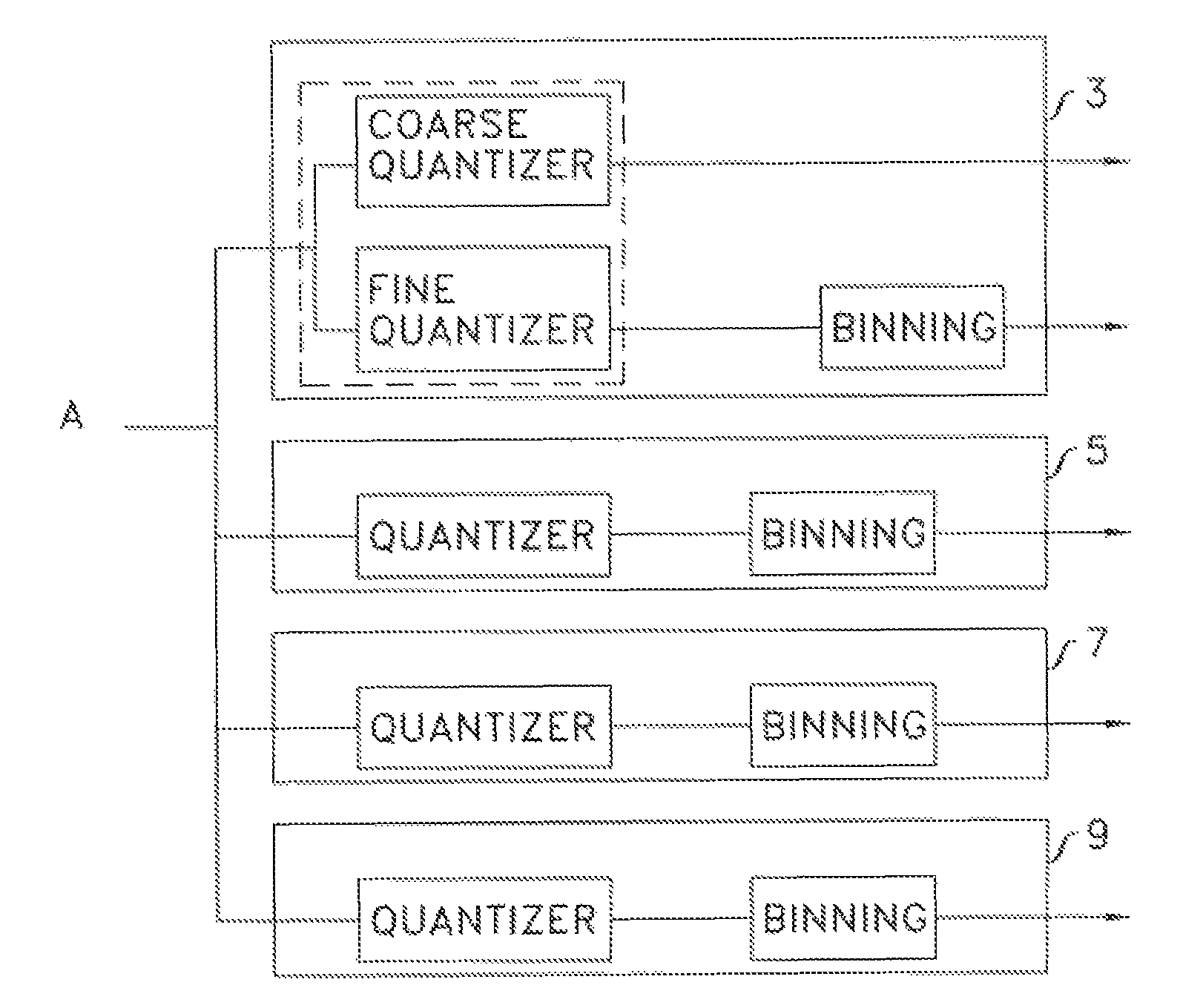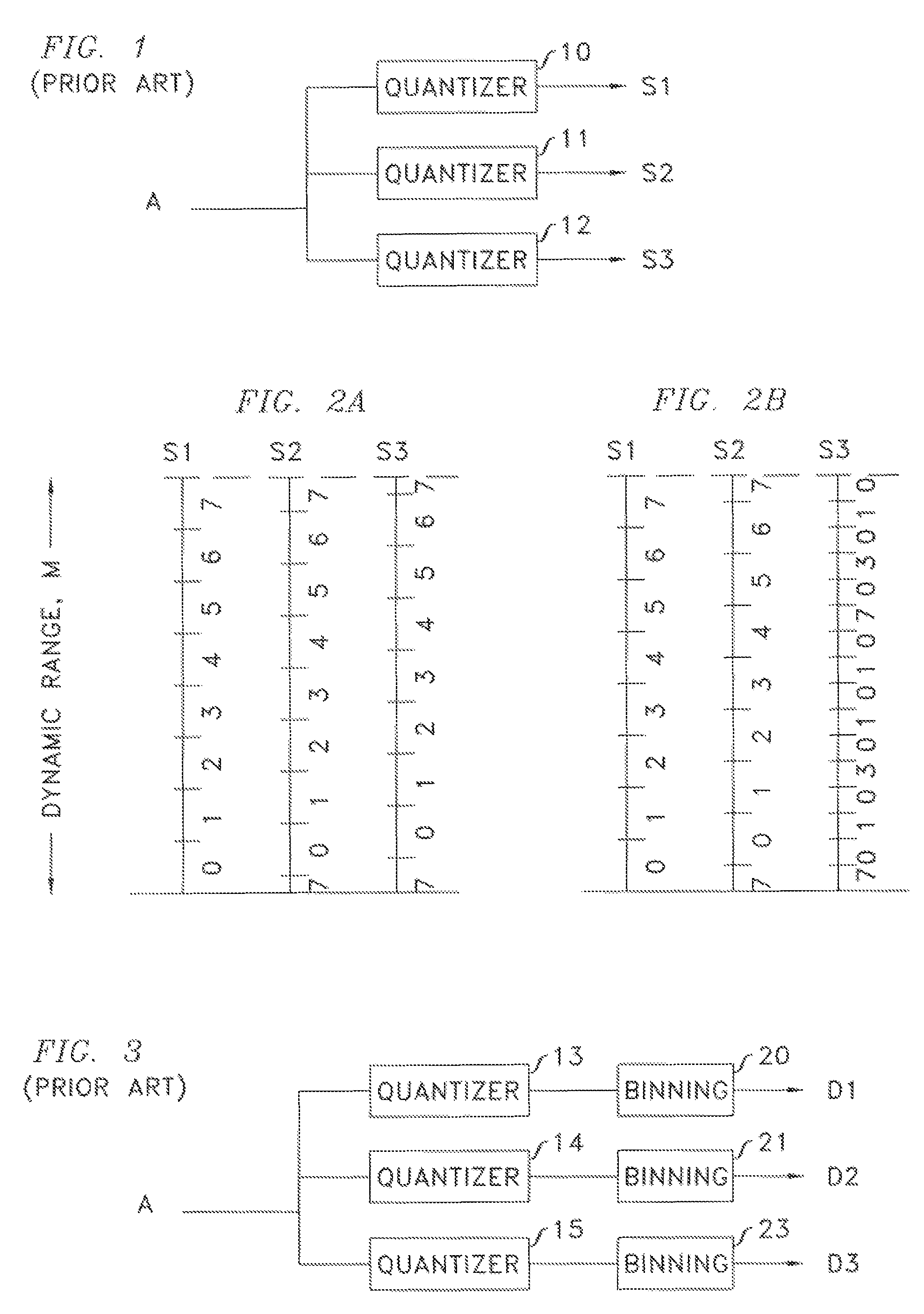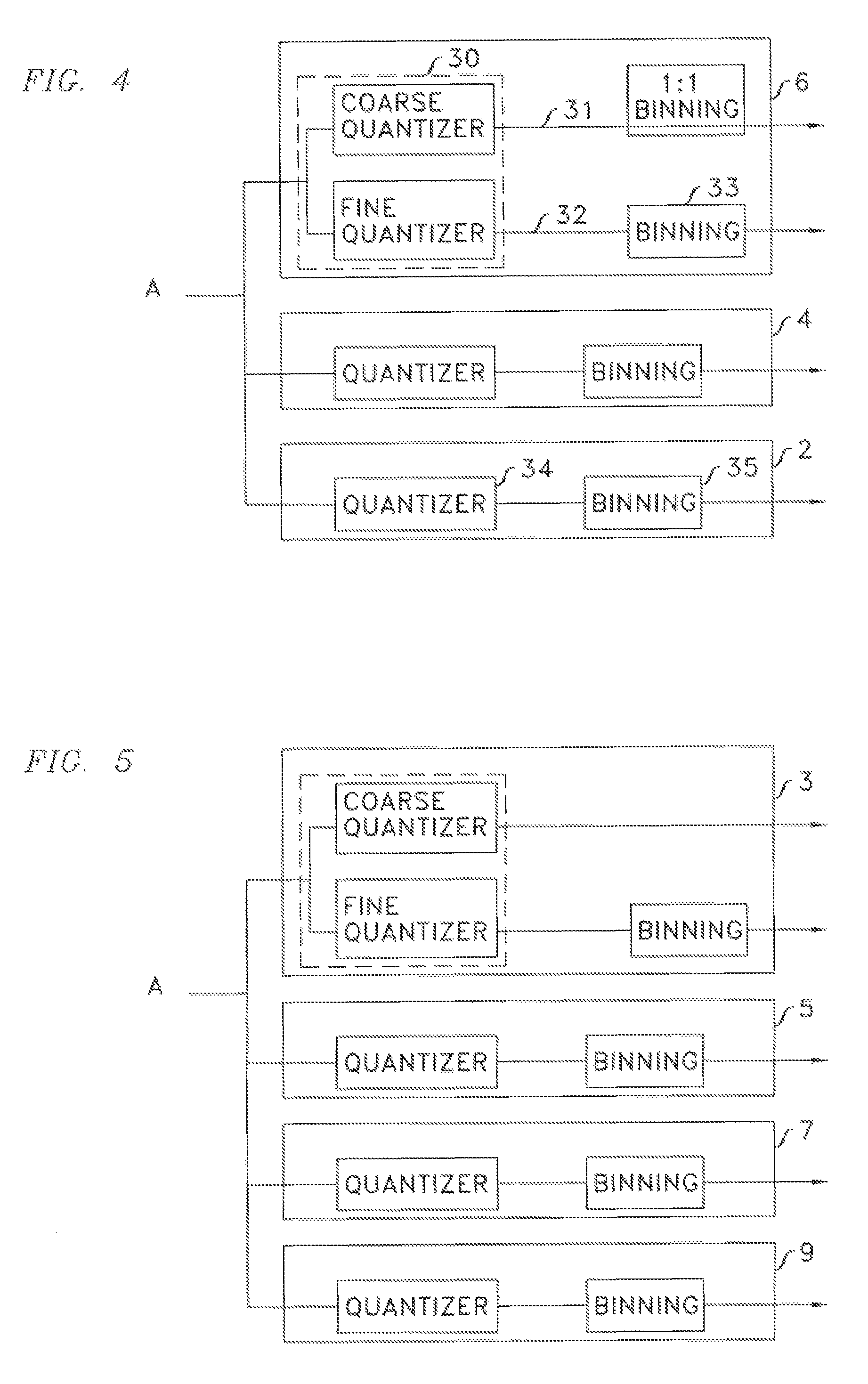Quantization splitting multiple description encoder
a technology of description encoder and quantization, applied in the field of multiple description encoder, can solve the problem of loss of information and is not recoverabl
- Summary
- Abstract
- Description
- Claims
- Application Information
AI Technical Summary
Benefits of technology
Problems solved by technology
Method used
Image
Examples
Embodiment Construction
[0025]Generally speaking, a signal stream can be encoded into N descriptions and, as indicated above, the prior art teaches that an (N:K) multiple description binning encoder like the one depicted in FIG. 3 can be created to result in an arrangement where decoding is possible even when only K descriptions are available, where K is a chosen integer less than N.
[0026]In accord with the principles of this invention, an encoder can be designed which (a) provides N descriptions, (b) employs binning, (c) permits full decoding when a predetermined number of descriptions, K0 descriptions are available; and this is achieved by employing quantization splitting on L of the descriptions. The value of L is not greater than K, of course.
[0027]The principles of this invention are best applicable for N>2, N>K>1.
[0028]FIG. 4 depicts the structure of an embodiment where N=3, K=2, and L=1. What that means is that three descriptions are developed, that the binning is selected in accord with the teachin...
PUM
 Login to View More
Login to View More Abstract
Description
Claims
Application Information
 Login to View More
Login to View More - R&D
- Intellectual Property
- Life Sciences
- Materials
- Tech Scout
- Unparalleled Data Quality
- Higher Quality Content
- 60% Fewer Hallucinations
Browse by: Latest US Patents, China's latest patents, Technical Efficacy Thesaurus, Application Domain, Technology Topic, Popular Technical Reports.
© 2025 PatSnap. All rights reserved.Legal|Privacy policy|Modern Slavery Act Transparency Statement|Sitemap|About US| Contact US: help@patsnap.com



